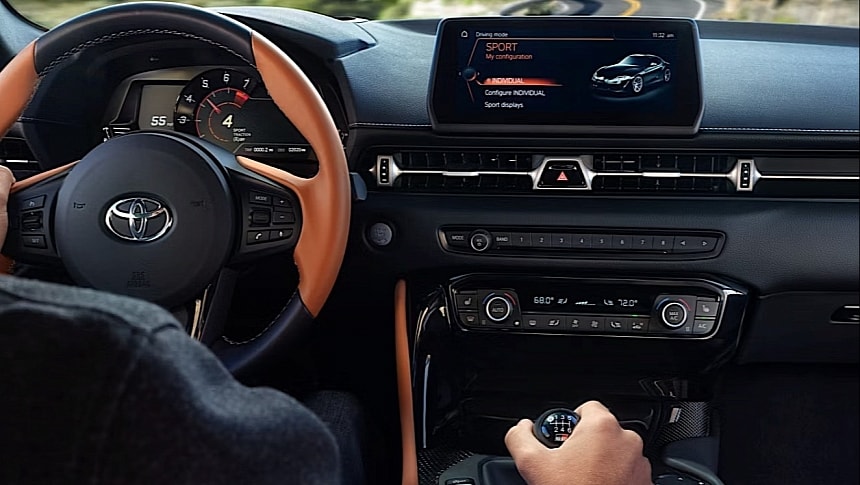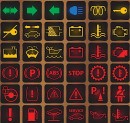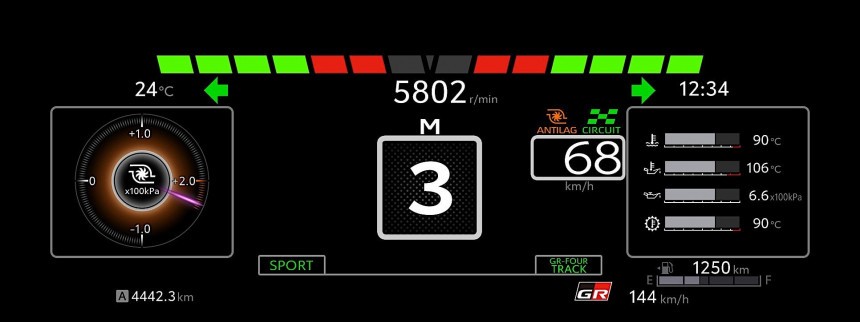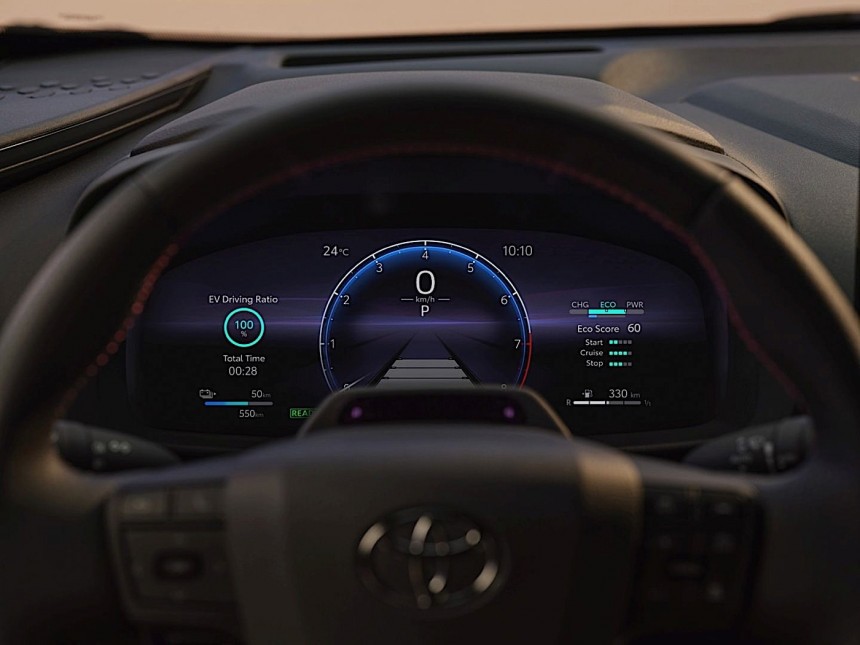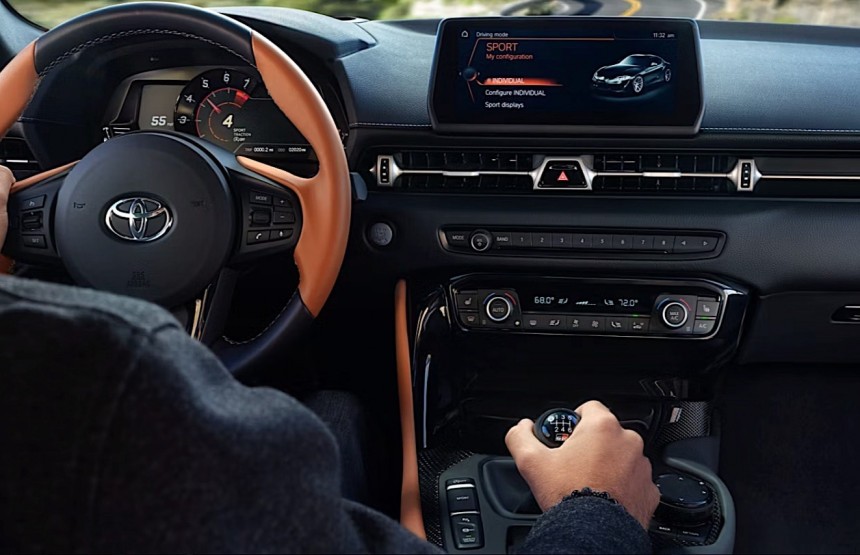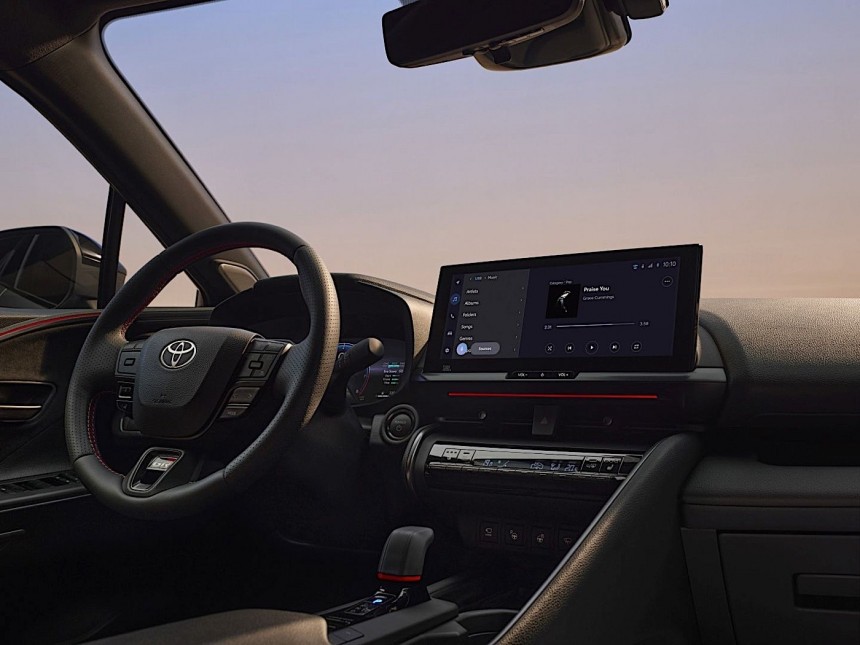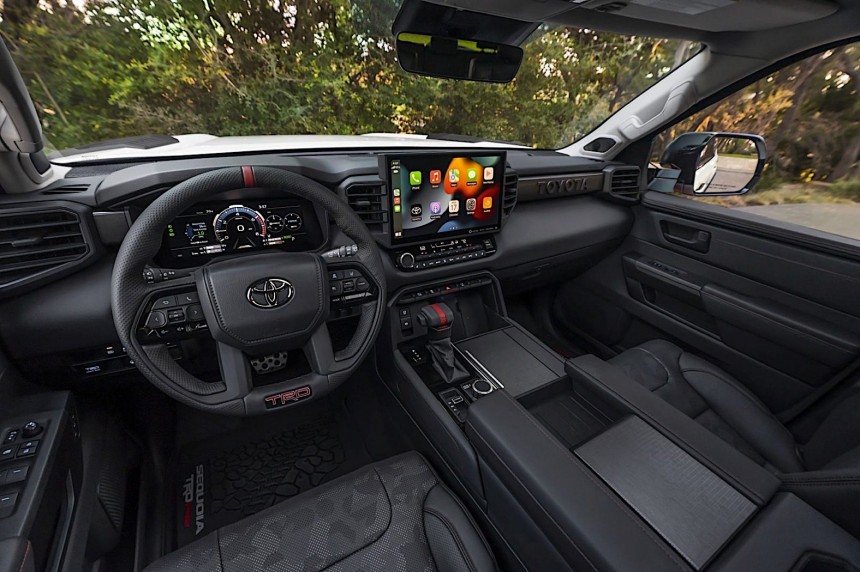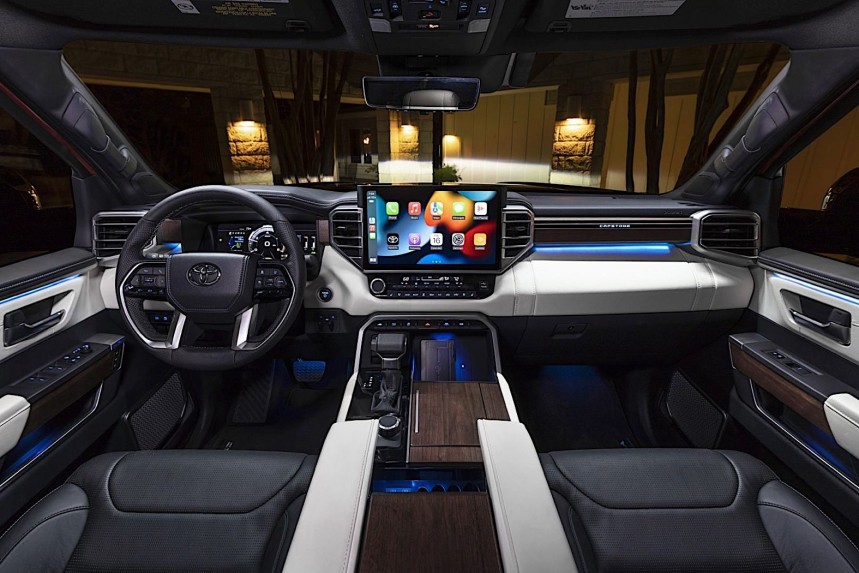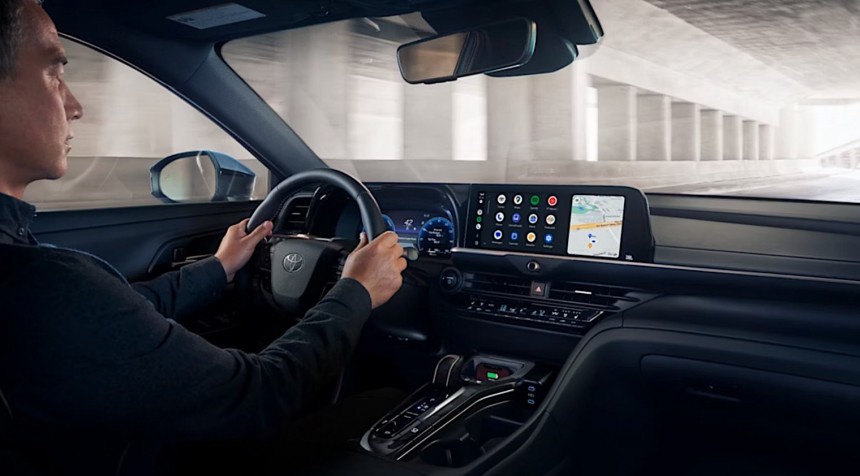Word is that you won’t ever need to know what all the dashboard lights mean in a Toyota, because the fault ones might never turn on if you do the regular maintenance properly. That being said, these dashboard lights simply being there usually means at some point you’ll have to know what they say. And that’s what this guide is here for.
Before getting into it, a few clarifications. Toyota is one of the world’s largest carmakers, and since it was established in 1937, it produced a staggering 300 million cars on a global level. That’s not some number I made up, but the official milestone the company reached in November 2023.
And now comes a really interesting part. According to a Toyota study conducted back in 2015, 80 percent of those cars are still on the road somewhere on this planet. What does that mean for the purposes of our story?
As you can easily imagine, almost nine decades of carmaking also brought incredible technological leaps. The engines, the transmissions, the suspension systems—everything evolved to such a degree that if someone from the 1930s traveled in our time, they would find it incredibly difficult to understand anything.
With the evolution of all these systems also came an evolution of the ways the car used to let the driver know there was a fault somewhere. For a very long time (and even today) a series of lights and symbols were used to transmit this information. Usually installed in the dashboard, the lights and symbols came on, flashed, or manifested themselves in some way when malfunctions occurred.
Today, more and more cars are adopting a more direct approach to fault signaling. Thanks to computers and digital displays, it is now possible for a car to use normal human words to relay a message: you need to do this; this happened; there’s a vehicle inspection coming up.
Separately, the switch from internal combustion engines to electric drives brought with it an entirely new series of messages, many of them displayed in words and phrases, but some still signaled through symbols and lights.
So, before immersing yourself in the hidden or less-than-hidden meanings below, keep in mind that the list contains, first and foremost, the most common symbols, the ones used on the majority of the 300 million Toyota cars made over the decades.
If you drive an electric car, for instance, the warnings related to oil pressure, fuel warnings, or the infamous engine warning light will naturally not be available on your car. Similarly, ICE cars will not show anything related to range, battery levels, or state of charge.
Toyota’s dashboard lights, like the ones used by all other carmakers on this planet, are to either inform or warn. Some of them will come on as soon as you turn on the ignition or start the car, and that’s a normal thing – all it means is that the car’s computer is checking if everything is working as intended.
They all turn off as soon as the engine or electric motors get going, so you can ignore them as long as they don’t stay on for longer than usual.
Warning lights will come on as soon as a malfunction with the system they are meant to serve is detected. They may indicate a non-urgent malfunction or status (such as low oil levels) or point to faults that require a qualified technician to examine. In either case, the light does tell you exactly what's wrong with the car in all instances, and it may require the use of special diagnostic tools.
The guide below is not intended to tell you what to do when a certain light comes on but only to explain the meaning of the symbols lighting up on your Toyota’s dashboard. We'll list them in alphabetical order in case you need to find something fast.
Active Traction Control (A-TRAC) indicator - active traction control prevents the acceleration of all four wheels when on slippery surfaces. When engaged, a special indicator comes on.
Anti-lock braking system (ABS) warning light - tells that the anti-lock braking system (which prevents the wheels from locking under hard braking so you can keep control of the vehicle) has encountered a problem or a sensor needs replacement. The icon may also come up if one of the sensors has caught too much dirt or if you did a burnout with your car and stopped quick enough to fool the ABS system. This also applies for when your car is stuck in snow or mud and the tires spin freely.
Automatic Transmission Oil Temperature warning - the transmission oil is too high and you should slow down or even stop to let it cool. Wrong transmission oil can lead to overheating. Take the vehicle to a service if the problem persists.
Battery warning light (ICE cars) - when the battery warning light comes on, it could point to a fault in the, well, battery, but also in the charging system. This light also tells you to contact specialized help, because even internal combustion engined cars need a bit of electricity to work.
Blind spot monitor (BSM) Indicator - when the blind spot monitor is illuminated it indicates that another vehicle is in the blind spot of the rearview mirrors, or approaching rapidly, most likely about to overtake.
Brake system warning light - brakes are perhaps the most important safety components of a car, so when ever the light telling you a possible problem with them comes on, you should talk to someone who knows what they're doing. The light can point to a number of things, including low brake fluid level.
Coolant temperature light - a car's engine tends to get very hot when in operation, thus it needs something to keep it within decent temperatures. Most of the time that means circulating coolant through the radiator. If that doesn't happen, the temperature of the car could rise to levels that may cause physical harm to it. The warning light can come on for a variety of reasons, including a fault with the thermostat, the ventilator, a sensor, or low coolant levels.
Crawl control indicator - shows that the crawl control is working and is ready to assist the SUV in handling extremely rough off-road terrain.
Cruise control indicator - it says that the cruise control system is working. You can usually turn it off by pressing the brake.
Dynamic radar cruise control indicator - some Toyotas come with vehicle-to-vehicle distance control that allows them to accelerate, decelerate, and stop to match the speed changes of the vehicle in front. When this indicator is on, the system is operational.
Eco driving indicator - this one informs you that you are driving in eco mode to save fuel and emit less CO2. The car might not be as sporty as it feels when the indicator is OFF.
Electric power steering warning light - power steering has made life a lot easier for drivers, as it handles all the heavy lifting of changing the direction of the front wheels. When there is a problem with this system, a dedicated light will come on. Faults to the power steering system not only make the operation of a car more difficult, but it also could be dangerous, so you should have it fixed as soon as possible.
EV mode (hybrids only) - it shows the vehicle is operating on the electricity provided by the battery and the spin generated by the electric motors.
Four-wheel drive indicator (SUVs only) - on Toyota SUVs, this indicator is a testimony to the vehicle's mode of operation, showing whether it's in 2WD, 4H, or 4L modes.
Fuel filter water warning - if it stays ON, it indicates that water has been detected in the fuel filter. Don’t panic if you’re driving, but stop at a service and have the mechanics drain out the water.
Fuel warning light - if the last bar on the meter is on or flashing you need to pull up to a gas station and fill you tank.
Glow plugs indicator - it will show up when it is cold outside and it informs you that the glow plugs inside the engine are warming up the combustion chamber. Don’t start the engine until the indicator goes OFF. If it stays on too much, the glow plugs might have a problem, or it's too damn cold.
Headlight low/high beam indicator - this one informs you that the low/high beam or even daytime running/position lights are ON. If the indicator also has an exclamation mark, you should check the lights, as one or multiple light bulbs are dead.
Headlight leveling warning light - some cars have a feature that automatically adjusts the height of the cut-off line to the load condition of car. When this is malfunctioning, a dedicated light will come on.
Lane departure alert - the operation of the lane departure system is indicated in green when the steering wheel assistance is on, and orange when the function is operating.
Malfunction indicator lamp (engine check) - there are some issues that, even if monitored by the car's system, can't properly be displayed for the driver. Faults with things like the electronic engine control system, throttle control system, or continuously variable transmission control system are made public by displaying the malfunction indicator, the infamous engine check symbol. Whenever this thing comes on, it usually is an emergency, and ignoring it could put the car or passengers at risk.
Maintenance required (MAINT REQD) - every car needs to be regularly serviced and have things like filters and liquids replaced. When this light comes on, it informs you it's time for you to get the car into service for the regular maintenance program. A message on the multi-information display (if you have one) might warn you several hundreds of miles or a few weeks before the limit is reached to schedule the maintenance.
Multi-terrain select indicator (SUVs only) - informs that the multi-terrain select system is activated.
Oil warning light - another liquid that is crucial to the operation of an engine is oil, used to lubricate the many moving parts. When the oil warning light comes on, it can mean the oil pressure in the engine is either too low or too high, so do check its level before driving further. The indicator might also mean the oil pump is damaged or its intake is obstructed. Wrong viscosity oil might be another reason for the light to switch on.
Open door warning light - opening a door is essential to getting in and out of the vehicle, but that can only happen when the vehicle is stationary. That's why every time the wheels start spinning and a door is not properly closed, a light will come on to alert you to the problem.
Overdrive OFF indicator - informs you that the overdrive system has been switched OFF.
Park brake indicator - a park brake, like its name says, is meant to keep a vehicle in place when stationary. When it's on, the light means to tell you the brake is still engaged, and you should do something about it so not to damage the locked wheels as you get on the road. If the light stays on regardless, it could point to an issue with the braking system, and you should have that checked out.
Pre-collision system (PCS) warning light- the pre-collision system is used to detect obstacles and warn drivers. When not working properly, the car lets the driver know this by displaying a dedicated light. When this happens drive with care and take the car to a service to solve the issue.
READY indicator (hybrids only) - it indicates that the hybrid system is working properly and can move the car even if the engine is off by changing from a flashing to a solid light. When the indicator is off, the car cannot move.
Seatbelt warning light - it's not only illegal, but also dangerous to travel without the seatbelt properly secured. That's why there is a special light indicator to remind you to fasten up, which stays on until you do. In most cases, this visual warning is accompanied by a very uncomfortable sound that only goes away after the seatbelt is fastened. Modern-day cars display this warning for both the front and rear seats.
Security indicator (with the smart key system) - as the name says, the security system is there to alert you of potential external dangers to your car. The way the vehicle tells you if the system is working in a smart key vehicle is by flashing when the car's engine or motors are off. This is a light that informs, so no action is required.
Security indicator (without the smart key system) - in cars that still rely on the good-old key, the security indicator starts flashing as soon as the key has been removed, signalling the system is on.
SRS warning light - the Supplemental Restraint System (SRS) is the fancy term carmakers now use for the car's airbag protection. When the light for it comes on, it may point to an issue with the airbag itself, but also wiith the seatbelt pretensioner. This warning is not one to ignore, as the faults it points to could lead to injuries or worse in case of a crash, and require immediate specialized assistance.
STOP warning light - it’s ok if it flashes when you start the car up, but if it goes ON while you drive it really means you should stop.
Tire pressure warning - a relatively new innovation, sensors in the tires allow the vehicle to inform you when the pressure in one or more tires changes. It can be the result of natural air leaks, or it could point to one or more tires being punctured. Either way, you should stop and have a look.
Traction control OFF (TRAC OFF) indicator - when lit up, this symbol warns you that you have disabled the traction control, something that is desirable when having to get unstuck from mud or snow.
Transmission warning light - indicates a malfunction within the transmission. Usually shows up for automatic transmissions that fail at some point to do their designated job. We don’t recommend using the car if the indicator is lit.
Turn signal indicator - it informs you that the turn signal or hazard lights are ON.
Vehicle slip indicator - it will go on when driving on snow, ice, mud or very wet road and it means that the car is slipping and the traction control system is working to ensure maximum traction possible.
Vehicle Stability Control warning light - this system is used to detect loss of steering and apply corrective measures. When malfunctioning, a warning light will come on. If the brakes still work you are safe to continue driving, but note that your stability systems are not working properly so don’t push your car around too much.
Windshield washer fluid warning light - informs you that you need to top up the washer fluid.
To make the most out of your Toyota, don’t forget to read the instruction manual provided with it, drive carefully, always perform the regular maintenance and use original replacement parts and fluids specially designed for your model.
And now comes a really interesting part. According to a Toyota study conducted back in 2015, 80 percent of those cars are still on the road somewhere on this planet. What does that mean for the purposes of our story?
As you can easily imagine, almost nine decades of carmaking also brought incredible technological leaps. The engines, the transmissions, the suspension systems—everything evolved to such a degree that if someone from the 1930s traveled in our time, they would find it incredibly difficult to understand anything.
With the evolution of all these systems also came an evolution of the ways the car used to let the driver know there was a fault somewhere. For a very long time (and even today) a series of lights and symbols were used to transmit this information. Usually installed in the dashboard, the lights and symbols came on, flashed, or manifested themselves in some way when malfunctions occurred.
Today, more and more cars are adopting a more direct approach to fault signaling. Thanks to computers and digital displays, it is now possible for a car to use normal human words to relay a message: you need to do this; this happened; there’s a vehicle inspection coming up.
So, before immersing yourself in the hidden or less-than-hidden meanings below, keep in mind that the list contains, first and foremost, the most common symbols, the ones used on the majority of the 300 million Toyota cars made over the decades.
If you drive an electric car, for instance, the warnings related to oil pressure, fuel warnings, or the infamous engine warning light will naturally not be available on your car. Similarly, ICE cars will not show anything related to range, battery levels, or state of charge.
Toyota’s dashboard lights, like the ones used by all other carmakers on this planet, are to either inform or warn. Some of them will come on as soon as you turn on the ignition or start the car, and that’s a normal thing – all it means is that the car’s computer is checking if everything is working as intended.
They all turn off as soon as the engine or electric motors get going, so you can ignore them as long as they don’t stay on for longer than usual.
Warning lights will come on as soon as a malfunction with the system they are meant to serve is detected. They may indicate a non-urgent malfunction or status (such as low oil levels) or point to faults that require a qualified technician to examine. In either case, the light does tell you exactly what's wrong with the car in all instances, and it may require the use of special diagnostic tools.
Active Traction Control (A-TRAC) indicator - active traction control prevents the acceleration of all four wheels when on slippery surfaces. When engaged, a special indicator comes on.
Anti-lock braking system (ABS) warning light - tells that the anti-lock braking system (which prevents the wheels from locking under hard braking so you can keep control of the vehicle) has encountered a problem or a sensor needs replacement. The icon may also come up if one of the sensors has caught too much dirt or if you did a burnout with your car and stopped quick enough to fool the ABS system. This also applies for when your car is stuck in snow or mud and the tires spin freely.
Automatic Transmission Oil Temperature warning - the transmission oil is too high and you should slow down or even stop to let it cool. Wrong transmission oil can lead to overheating. Take the vehicle to a service if the problem persists.
Battery warning light (ICE cars) - when the battery warning light comes on, it could point to a fault in the, well, battery, but also in the charging system. This light also tells you to contact specialized help, because even internal combustion engined cars need a bit of electricity to work.
Blind spot monitor (BSM) Indicator - when the blind spot monitor is illuminated it indicates that another vehicle is in the blind spot of the rearview mirrors, or approaching rapidly, most likely about to overtake.
Coolant temperature light - a car's engine tends to get very hot when in operation, thus it needs something to keep it within decent temperatures. Most of the time that means circulating coolant through the radiator. If that doesn't happen, the temperature of the car could rise to levels that may cause physical harm to it. The warning light can come on for a variety of reasons, including a fault with the thermostat, the ventilator, a sensor, or low coolant levels.
Crawl control indicator - shows that the crawl control is working and is ready to assist the SUV in handling extremely rough off-road terrain.
Cruise control indicator - it says that the cruise control system is working. You can usually turn it off by pressing the brake.
Dynamic radar cruise control indicator - some Toyotas come with vehicle-to-vehicle distance control that allows them to accelerate, decelerate, and stop to match the speed changes of the vehicle in front. When this indicator is on, the system is operational.
Electric power steering warning light - power steering has made life a lot easier for drivers, as it handles all the heavy lifting of changing the direction of the front wheels. When there is a problem with this system, a dedicated light will come on. Faults to the power steering system not only make the operation of a car more difficult, but it also could be dangerous, so you should have it fixed as soon as possible.
EV mode (hybrids only) - it shows the vehicle is operating on the electricity provided by the battery and the spin generated by the electric motors.
Four-wheel drive indicator (SUVs only) - on Toyota SUVs, this indicator is a testimony to the vehicle's mode of operation, showing whether it's in 2WD, 4H, or 4L modes.
Fuel filter water warning - if it stays ON, it indicates that water has been detected in the fuel filter. Don’t panic if you’re driving, but stop at a service and have the mechanics drain out the water.
Glow plugs indicator - it will show up when it is cold outside and it informs you that the glow plugs inside the engine are warming up the combustion chamber. Don’t start the engine until the indicator goes OFF. If it stays on too much, the glow plugs might have a problem, or it's too damn cold.
Headlight low/high beam indicator - this one informs you that the low/high beam or even daytime running/position lights are ON. If the indicator also has an exclamation mark, you should check the lights, as one or multiple light bulbs are dead.
Headlight leveling warning light - some cars have a feature that automatically adjusts the height of the cut-off line to the load condition of car. When this is malfunctioning, a dedicated light will come on.
Lane departure alert - the operation of the lane departure system is indicated in green when the steering wheel assistance is on, and orange when the function is operating.
Maintenance required (MAINT REQD) - every car needs to be regularly serviced and have things like filters and liquids replaced. When this light comes on, it informs you it's time for you to get the car into service for the regular maintenance program. A message on the multi-information display (if you have one) might warn you several hundreds of miles or a few weeks before the limit is reached to schedule the maintenance.
Multi-terrain select indicator (SUVs only) - informs that the multi-terrain select system is activated.
Oil warning light - another liquid that is crucial to the operation of an engine is oil, used to lubricate the many moving parts. When the oil warning light comes on, it can mean the oil pressure in the engine is either too low or too high, so do check its level before driving further. The indicator might also mean the oil pump is damaged or its intake is obstructed. Wrong viscosity oil might be another reason for the light to switch on.
Open door warning light - opening a door is essential to getting in and out of the vehicle, but that can only happen when the vehicle is stationary. That's why every time the wheels start spinning and a door is not properly closed, a light will come on to alert you to the problem.
Park brake indicator - a park brake, like its name says, is meant to keep a vehicle in place when stationary. When it's on, the light means to tell you the brake is still engaged, and you should do something about it so not to damage the locked wheels as you get on the road. If the light stays on regardless, it could point to an issue with the braking system, and you should have that checked out.
Pre-collision system (PCS) warning light- the pre-collision system is used to detect obstacles and warn drivers. When not working properly, the car lets the driver know this by displaying a dedicated light. When this happens drive with care and take the car to a service to solve the issue.
READY indicator (hybrids only) - it indicates that the hybrid system is working properly and can move the car even if the engine is off by changing from a flashing to a solid light. When the indicator is off, the car cannot move.
Seatbelt warning light - it's not only illegal, but also dangerous to travel without the seatbelt properly secured. That's why there is a special light indicator to remind you to fasten up, which stays on until you do. In most cases, this visual warning is accompanied by a very uncomfortable sound that only goes away after the seatbelt is fastened. Modern-day cars display this warning for both the front and rear seats.
Security indicator (without the smart key system) - in cars that still rely on the good-old key, the security indicator starts flashing as soon as the key has been removed, signalling the system is on.
SRS warning light - the Supplemental Restraint System (SRS) is the fancy term carmakers now use for the car's airbag protection. When the light for it comes on, it may point to an issue with the airbag itself, but also wiith the seatbelt pretensioner. This warning is not one to ignore, as the faults it points to could lead to injuries or worse in case of a crash, and require immediate specialized assistance.
STOP warning light - it’s ok if it flashes when you start the car up, but if it goes ON while you drive it really means you should stop.
Tire pressure warning - a relatively new innovation, sensors in the tires allow the vehicle to inform you when the pressure in one or more tires changes. It can be the result of natural air leaks, or it could point to one or more tires being punctured. Either way, you should stop and have a look.
Traction control OFF (TRAC OFF) indicator - when lit up, this symbol warns you that you have disabled the traction control, something that is desirable when having to get unstuck from mud or snow.
Transmission warning light - indicates a malfunction within the transmission. Usually shows up for automatic transmissions that fail at some point to do their designated job. We don’t recommend using the car if the indicator is lit.
Turn signal indicator - it informs you that the turn signal or hazard lights are ON.
Vehicle slip indicator - it will go on when driving on snow, ice, mud or very wet road and it means that the car is slipping and the traction control system is working to ensure maximum traction possible.
Vehicle Stability Control warning light - this system is used to detect loss of steering and apply corrective measures. When malfunctioning, a warning light will come on. If the brakes still work you are safe to continue driving, but note that your stability systems are not working properly so don’t push your car around too much.
Windshield washer fluid warning light - informs you that you need to top up the washer fluid.
To make the most out of your Toyota, don’t forget to read the instruction manual provided with it, drive carefully, always perform the regular maintenance and use original replacement parts and fluids specially designed for your model.
